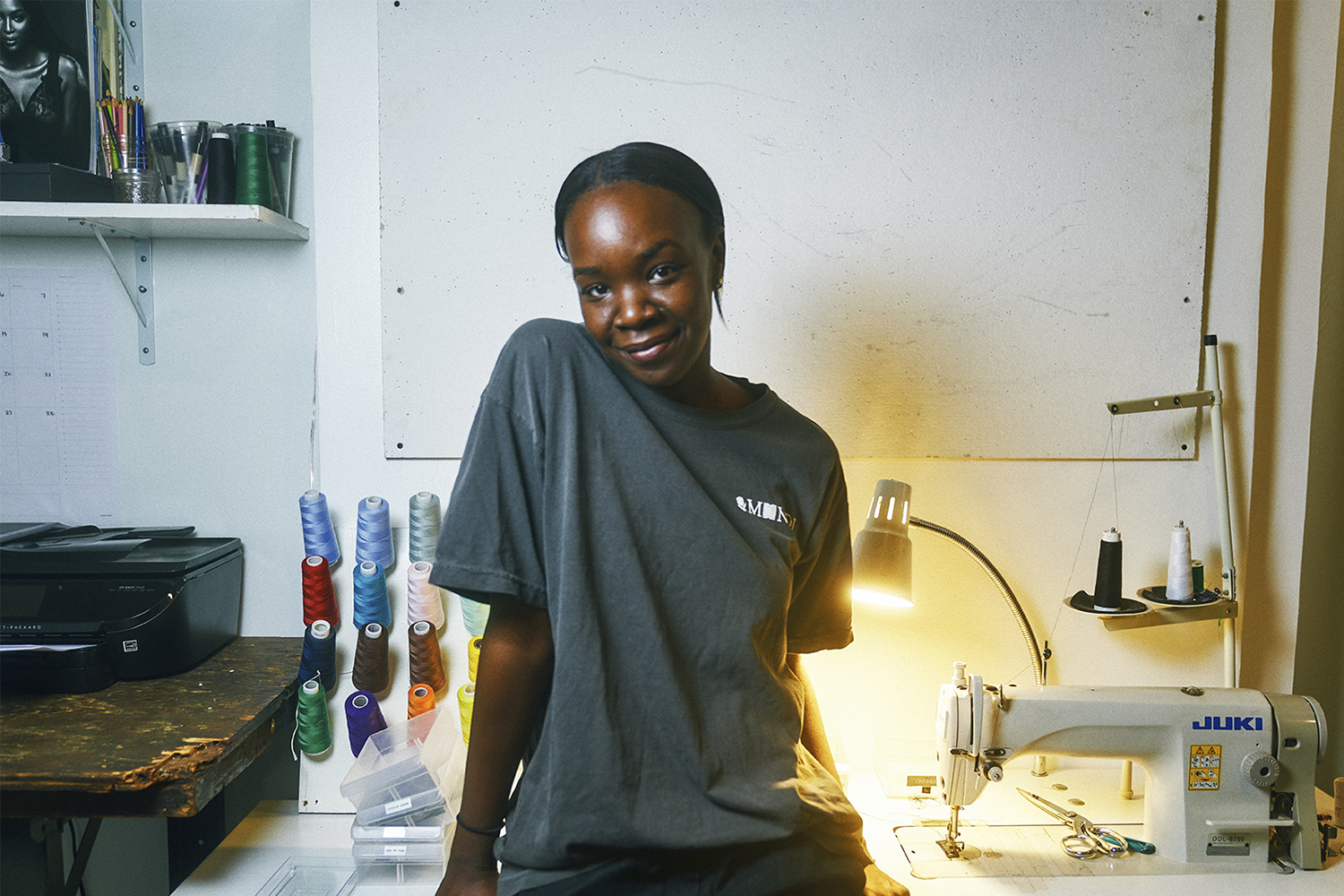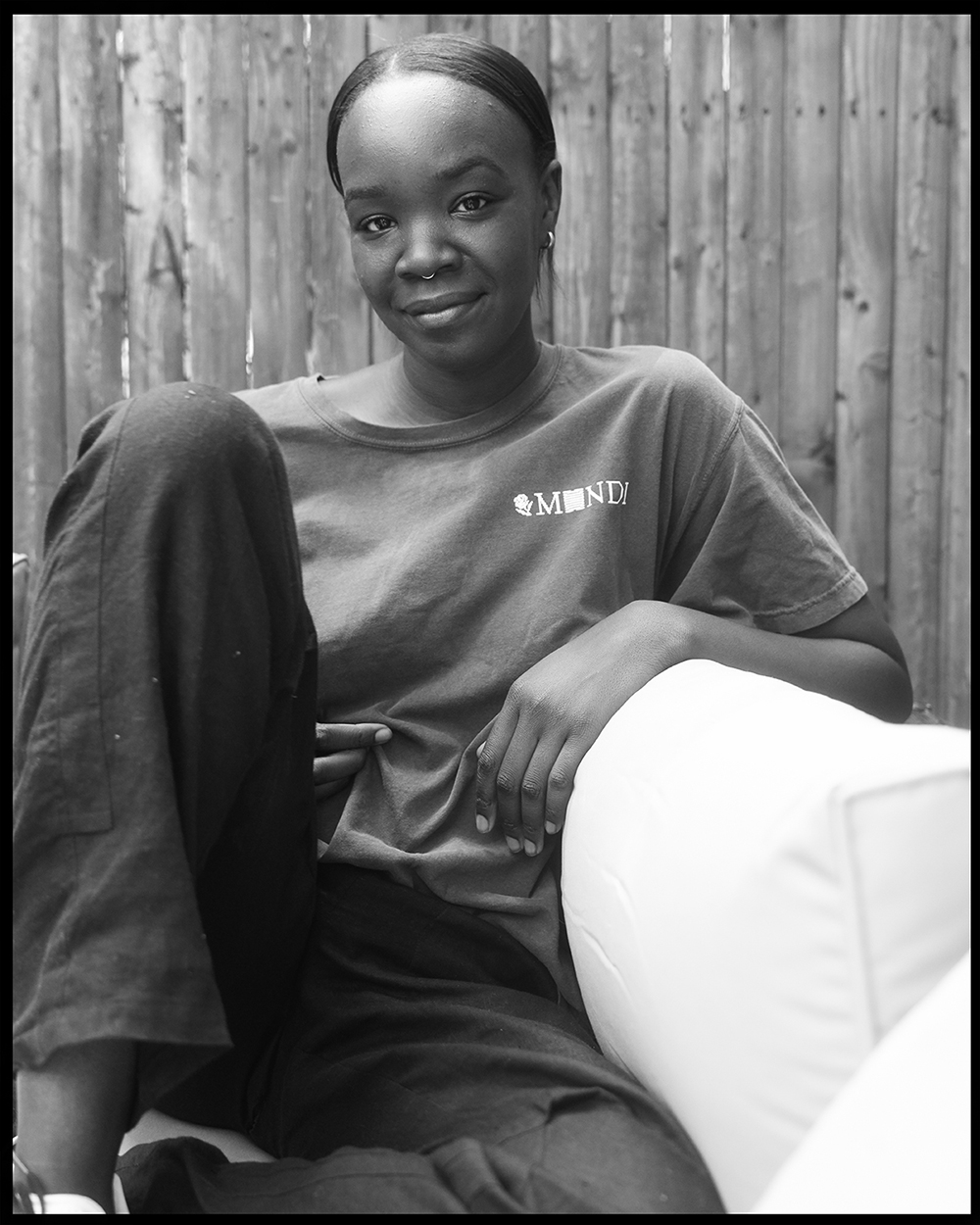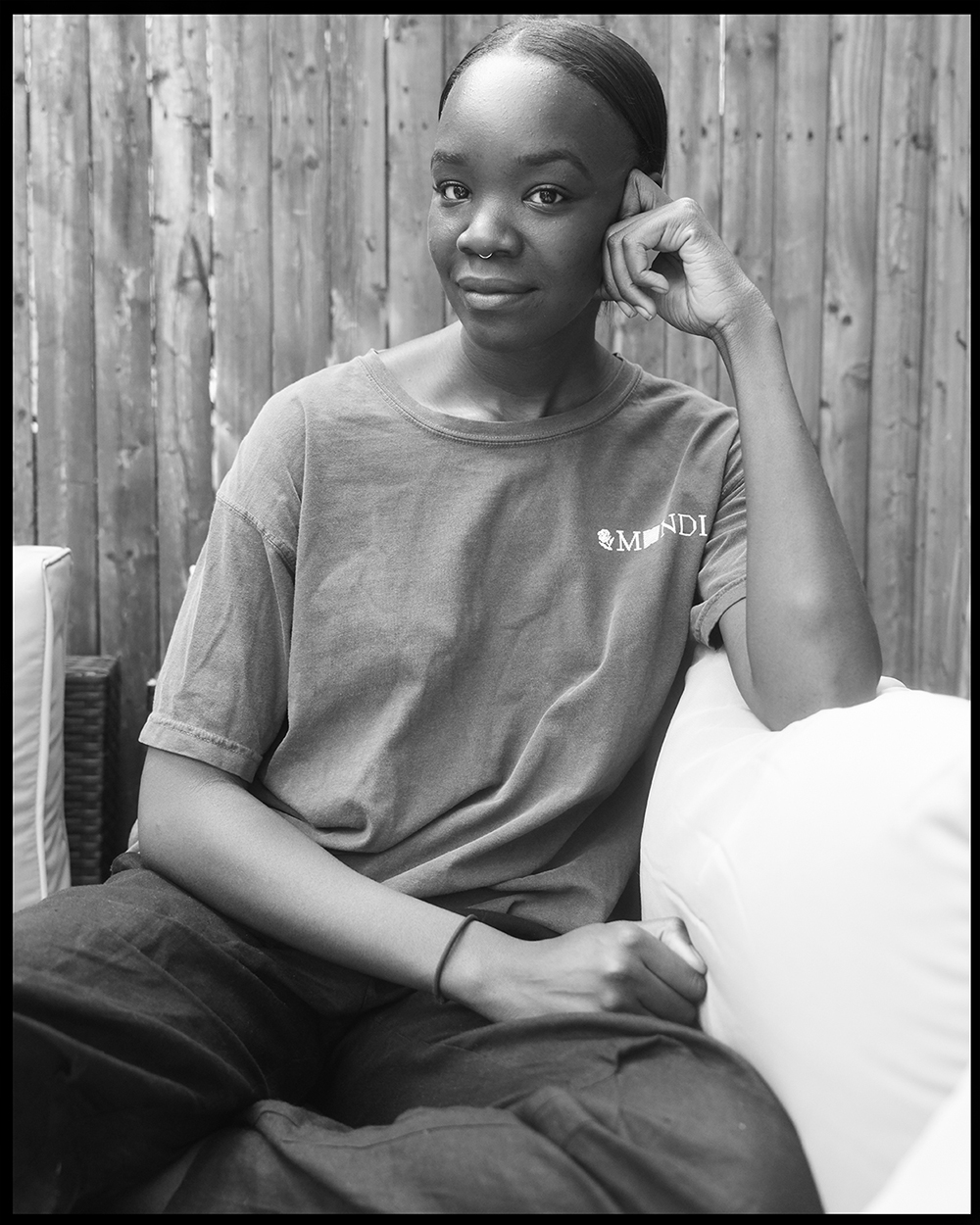London has Burberry. Paris has Dior. And Milan has Prada. Proenza Schouler has returned to New York, so maybe there’s hope for America’s fashion capital. Nonetheless, American fashion has recently been the industry’s yawn fest. SCAD alumni Recho Omondi, however, is one of the few New York-based designers preserving fashion’s artistry and keeping things interesting.
Born to Kenyan parents in Nowhere, Oklahoma (yes, it’s seriously called Nowhere), Omondi grew up in, what she considers, “towns that actually reflect more of what’s going on in fashion today.” Today, meaning dad shoes, fanny packs, and total oblivion to capital ‘F’ fashion. She traveled and moved frequently throughout the Midwest before settling in Atlanta to study fashion design at SCAD. Her surroundings, as she matured her creative eye, play a key role in understanding her knack for storytelling.
“I didn’t go to SCAD as a designer, I went as a naive 19-year-old,” she says. “I left with a lot more skills than I had
The Manor: What was one of the wildest experiences you had during your studies?
Recho Omondi: In general or that had to do with SCAD? ‘Cause I was living in Atlanta, so there were a lot of wild experiences that were happening.
In general.
There’s a lot, but they don’t have to do with this interview. I guess I would say one of the wildest things was a teacher trying to fail me.
Really?
Yeah. The professor didn’t really like me and the fashion director had to overrule it, which allowed me to enter my senior year. That was what was at risk if they had failed me. It wasn’t necessarily them trying to fail me, but they were trying to give me a B when I deserved an A. If they gave me a B, I wouldn’t be able to go into my next year of school. So, basically, they were trying to fail me. I would’ve had to wait a whole 365 days to take another class. That’s probably the wildest thing, but it’s cool because I’m precocious and very outspoken. My work wasn’t bad, and that’s how I knew it was a personal bias because I’ve never produced bad work. You just don’t like me. And it’s hard to prove that when you’re a student.
Recho Omondi at her home and studio in Brooklyn, New York.
Omondi mentions that being expressive is something that comes, at times, too naturally to her. It’s probably why that professor tried to fail her, but that’s her edge during these trying times in fashion. Her candor and ingenuity are why Solange, Bethann Hardison, and 22,000 Instagram followers connect with her. And for some indescribable reason, I also feel connected to Omondi. Originally, I thought it was because I’m a black fashion nerd too. Although true, I realized it’s because as a die-hard appreciator of really good fashion, I can see the amount of authenticity Recho puts into each piece of OMONDI.
OMONDI, her eponymous label, came to fruition while she was nannying in New York City. The side hustle was her break away from working as a full-time pattern maker, where she felt “limited” and didn’t see a long-term future for herself.
With a sewing machine in her Brooklyn apartment and more time becoming available as toyed with the idea of creating her own label, OMONDI was eventually born. No capital, no full staff. Just a curious young woman with a dream and a sewing machine.
After a brief sabbatical in search of capital (which she found), Recho was back and better than ever. Collection after collection, the evolution of Omondi’s design talent continued to improve, along with her visual storytelling. And although she doesn’t show–or plan on showing–at New York Fashion Week, her clothes and voice still garner attention. Vogue, Fashionista, Teen Vogue, Refinery29, and i-D are just a few of the publications that have acknowledged Omondi’s capabilities, not only as a designer but as a leading voice for the future of fashion.
I would love to see a bit more seriousness, accountability, and responsibility from the fashion industry, rather than just pretty pictures.”
That same unapologetic and honest voice is what led to the creation of The Cutting Room Floor, her bi-weekly podcast (which you can listen to on Spotify or iTunes after reading this!) that indirectly serves as a response to fashion’s absence of critical critique and discussion. She recently interviewed fashion’s favorite vigilantes, Diet Prada and A$AP Rocky’s stylist Matthew Henson on some serious topics. Omondi says it was never her intention to become the hottest podcast in fashion, “whether people listen to it or not is only a frosting on the cake.”
Where did The Cutting Room Floor’s name come from? Is that a fashion term?
It’s really an editing term used across all industries. It is a term used for a place where an edit didn’t make it to the final cut. That’s where it’s left behind. It’s a way to symbolize that there are conversations that aren’t being had. So let’s have them and take them up off the floor, and put them on this podcast. In that sense, the fashion space is a bit different and a play on words because that term is used for something digital, and the fashion industry has a cutting room in the factories and whatever fabrics aren’t used, that’s what’s left on the cutting room floor.
You mention pushing the idea of intellect back into fashion on an episode of The Cutting Room Floor. Is that something that you want to bring back with the podcast and your brand?
I would love to see intellect come back to the industry. I would love to see a bit more seriousness, accountability, and responsibility from the fashion industry, rather than just pretty pictures. As a consumer and a designer, I was missing that critical and thoughtful thing from the magazines and writers that I loved reading. Growing up, what I was reading was like a mix of a Vogue and a Wall Street Journal. It was very much a mixture of worldly topics and fashion and storytelling, and I think we kind of lost that part. So The Cutting Room Floor was kind of my way to tap into that for myself.
What do you think about Virgil Abloh using the same name that you have for your podcast?
I don’t care. I really, truly don’t care.
Some people would be offended.
Yeah. It could’ve been a coincidence. I didn’t coin that term, but either way, if he did steal it, I genuinely don’t give a shit.
Do you have a big vision and plan for OMONDI?
It’s not so much that I have one grand vision that I can ideate in a couple of sentences. It’s more of every branch of industry. There are new ways to do all of it. My vision is more about innovation and storytelling and wanting to be able to tell really grand stories that are different.
What are some narratives that you’re planning to explore with OMONDI?
I look at my collections kind of like a journal entry, so I don’t really know. I use whatever is going on in my personal life, or creatively, to dictate whatever story I’m going to tell.
Everything is extremely personal and story-driven with OMONDI. I think that’s why a lot of your following is into the brand. Is that something that will be your key touch?
I really hope so. I think you’re right. It’s something that connects with people. No matter how big we get, or how corporate we may or may not get, I do hope that it can stay feeling intimate and personal. ‘Cause that’s what tugs on people’s heartstrings and what makes people even want to connect to it.
Case in point, Recho Omondi is exactly what the fashion industry needs: an honest designer who is unafraid to be fully creative, unapologetically honest, and authentic to their brand and themselves.
This interview has been edited and condensed.
Photography by Kristopher Dobbins



